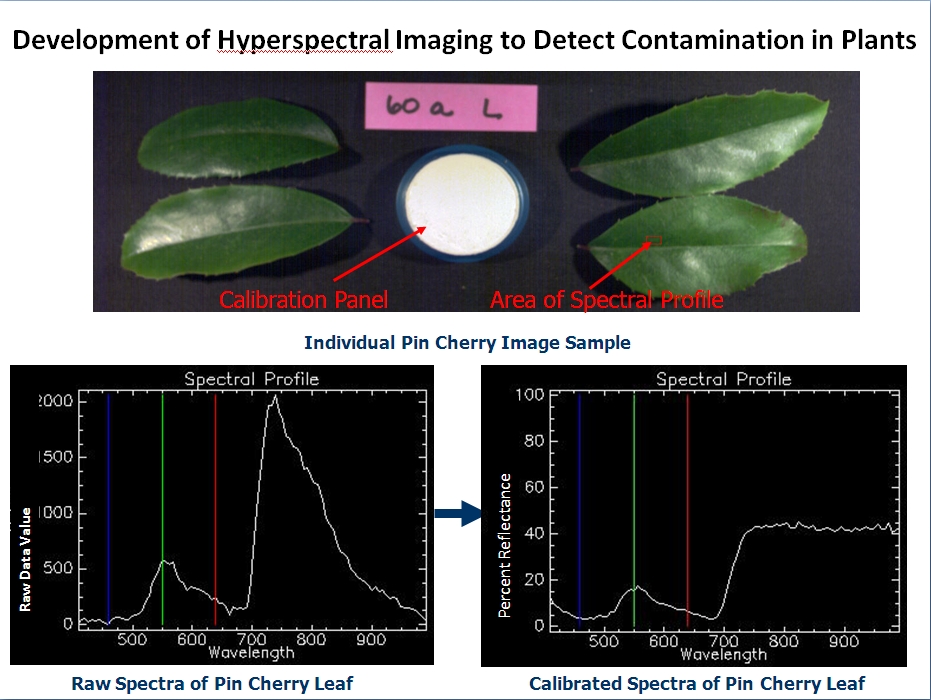United States Naval Research Laboratory
Bio-Optical/Physical Processes and Remote Sensing Section
Development of Hyperspectral Imaging to Detect Contamination in Plants
Objective:
The Naval Research Laboratory (NRL) is supporting the NASA Marshall Space Flight Center (MSFC) Environmental Engineering and Management Office in developing methods to use hyperspectral imaging devices to monitor plants exposed to the xenobiotic contaminant trichloroethylene (TCE), which is known to negatively affect human health. If TCE is present in the ground water all reports indicate that it is taken up by plants with the water stream. If TCE can be rapidly detected in plants at a sufficient level, it indicates that TCE is present in the ground water. Therefore developing techniques for the rapid detection of TCE or other indicators in plant leaves may provide alternatives or additional tools for identifying TCE plumes in the ground water. The series of experiments in this project are designed to use a hyperspectral sensor to collect spectra from plants dosed with TCE in a greenhouse and also plants not dosed with any contaminants. Discriminant analysis of the spectra is performed to determine classification accuracies between the dosed and control plant groups and to determine optimal spectra wavelengths for identifying TCE dosed plants. In addition, spectra has been collected from plants that are in their natural environment. Analysis of these data sets will also contribute to determining spectra that could help identify plants exposed to TCE. The ultimate goal of this project is to develop a hand-held sensor that could be taken into the field for detecting TCE in plants in their natural environment. This activity is funded by the NASA Marshall Space Flight Center.

